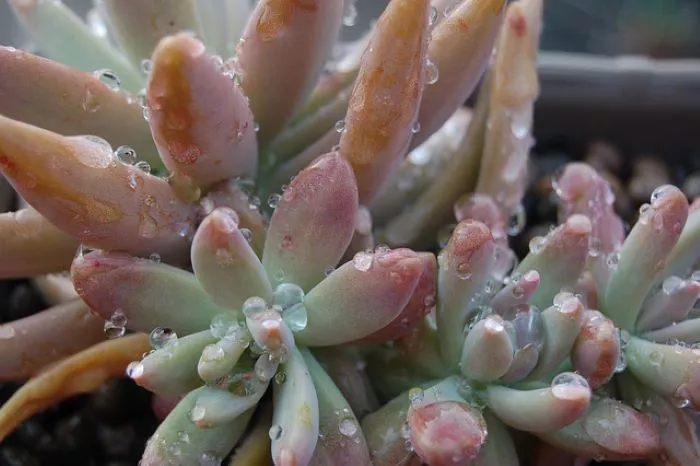Succulents are popular houseplants known for their unique shapes, vibrant colors, and low maintenance needs. These plants store water in their leaves, stems, and roots, allowing them to thrive in arid conditions. As a succulent enthusiast or gardener, understanding how much room these plants need to grow is essential for their health and longevity. This article will explore the space requirements for succulents, factors that influence their growth, and tips for providing adequate room for these fascinating plants.
Understanding Succulent Growth
Succulents come in various shapes and sizes, each with different growth habits. Some succulents grow tall and upright, while others spread out and form ground covers. The amount of space a succulent needs depends on its species, growth rate, and overall size. Providing enough room for these plants is crucial for their development, as overcrowding can lead to poor health and stunted growth.
General Space Requirements
As a general rule, succulents need enough space to grow without competing for resources. Here are some guidelines to consider when determining how much room your succulents need:
Spacing Between Plants
When planting succulents in a garden or container, it is essential to provide adequate spacing between each plant. A good rule of thumb is to space them at least 2 to 4 inches apart. This distance allows for proper air circulation and prevents the plants from overcrowding each other. Some larger varieties may require even more space.
Container Size
If you are growing succulents in pots, the size of the container plays a significant role in their growth. A pot that is too small can restrict root development and lead to waterlogged soil. Conversely, a pot that is too large may retain excessive moisture, which can cause root rot. A general guideline is to choose a pot that is 1 to 2 inches larger in diameter than the current root ball of the succulent.
Factors Influencing Space Needs
Several factors can influence how much space succulents need to grow. Understanding these factors can help you create the best environment for your plants.
Type of Succulent
Different succulent species have varying growth habits. For example, Echeveria and Sedum species tend to be compact and can thrive in smaller spaces. In contrast, Agave and Aloe species can grow quite large and require more room for their extensive root systems.
Growth Rate
Some succulents grow quickly, while others are slow growers. Fast-growing succulents may need to be repotted more frequently to accommodate their expanding roots. Slow-growing varieties can remain in the same container for longer periods without issues.
Environmental Conditions
The environment in which succulents are grown also affects their space needs. Succulents grown in optimal conditions, such as adequate sunlight, proper watering, and good soil, will grow more vigorously and may require more space than those grown in less favorable conditions.
Signs of Overcrowding
Recognizing the signs of overcrowding is essential for maintaining healthy succulents. Here are some indicators that your plants may need more room:
Leggy Growth
If your succulents are stretching toward the light source and developing long, spindly stems, they may be competing for space. This leggy growth indicates that the plants are not receiving enough light or that they are overcrowded.
Root Bound Condition
When a succulent becomes root bound, its roots fill the container, restricting further growth. Signs of a root-bound plant include roots growing out of the drainage holes or circling the inside of the pot. If you notice these signs, it may be time to repot the plant into a larger container.
Poor Health
Overcrowding can lead to poor health in succulents. If your plants are showing signs of stress, such as yellowing leaves or stunted growth, it may be due to insufficient space. Providing more room can help rejuvenate your plants.
Tips for Providing Adequate Room
To ensure your succulents have enough room to grow, consider the following tips:
Choose the Right Container
Select containers that provide adequate space for the roots to grow. Ensure that the pot has drainage holes to prevent water retention, which can lead to root rot.
Plan for Growth
When planting succulents, consider their potential size at maturity. Research the specific species you are growing to understand their growth habits and space needs. This knowledge will help you plan your garden or container layout effectively.
Repot as Needed
Regularly check your succulents for signs of overcrowding or root binding. If necessary, repot them into larger containers to provide more room for growth. This process is best done during the growing season, typically in spring or early summer.
Group Wisely
If you enjoy creating succulent arrangements, group plants with similar growth habits and space requirements. This approach will help prevent overcrowding and ensure that each plant has enough room to thrive.
Conclusion
Understanding how much room succulents need to grow is essential for their health and longevity. By providing adequate spacing between plants and selecting the right container size, you can ensure that your succulents thrive. Factors such as plant type, growth rate, and environmental conditions all play a role in determining space needs. By recognizing signs of overcrowding and taking proactive steps to provide enough room, you can cultivate a thriving succulent garden that brings beauty and joy to your home.


